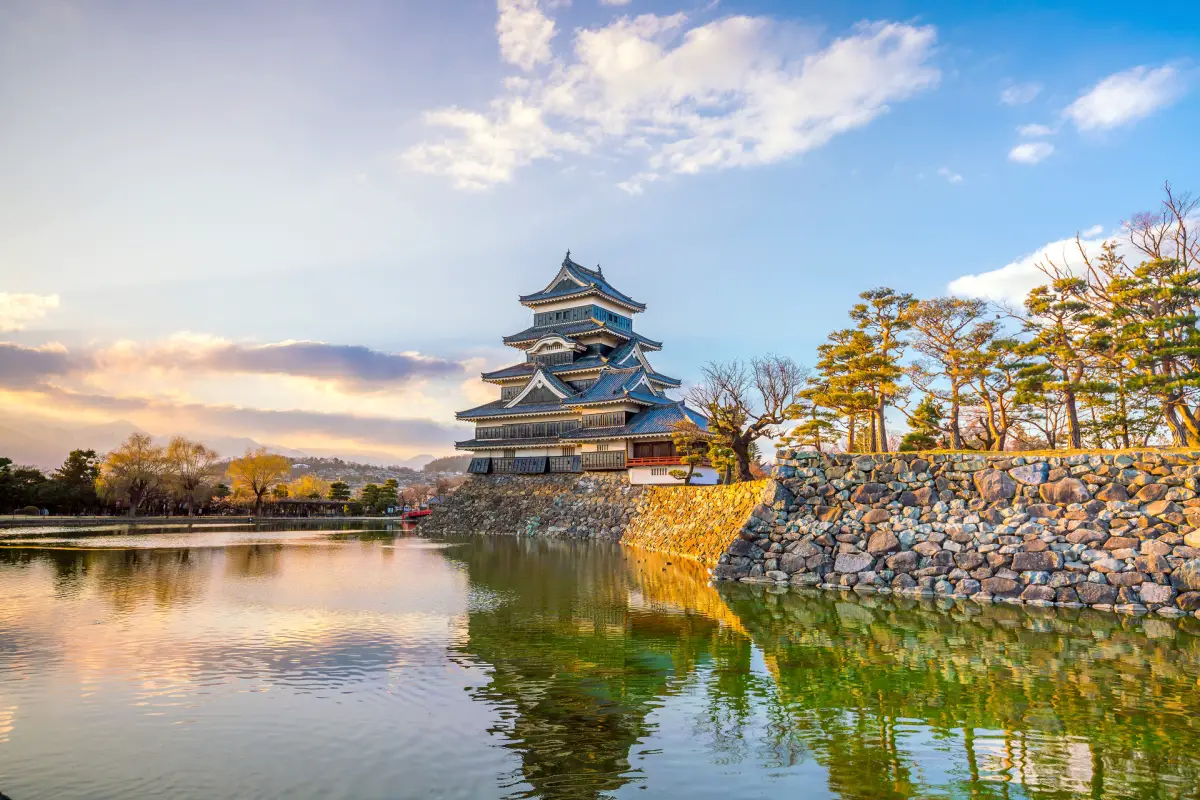12 weirdest things in Japan. Japan is known for its unusual, sometimes bizarre, and often high-tech culture. While it may be one of the safest countries in the world.
It’s also home to some strange things that you don’t see anywhere else.
Contents
Here are some of the weird and wonderful things you’ll find on your trip. Japan is one of the most interesting countries in the world.
Here are a lot of things that the rest of the world considers “strange” or even “weird” but were considered normal in Japan.
These facts are ranked according to their originality and diversity. If you read this article, then you will have a great time and gain more information about Japan.
In particular, you will discover why Japanese people think differently from others.
The culture in Japan is something that any guy who is open-minded and interested in foreign cultures should see.
However, there are certain things that you’ll only see in Japan. For instance, there are 12 weird things in Japan that not many people know about.
Below are the 12 weirdest things in Japan.
It’s no secret that Japan is a bit of an oddball. This isn’t a bad thing though; most of the weird things are just put there for tourists to take cute photos with.
If you’re planning a trip down to Nippon, look no furthern’we have a list of the 12 weirdest things in Japan!
12 weirdest Things in Japan
Japan has an interesting culture. It’s not the same as many other countries, and it’s not always easy to understand. But there are some things that are just plain weird.
For example, in Japan, you can buy a full-sized stuffed animal of your favorite character from an anime.
There are also vending machines that sell everything from canned coffee to hot water for your instant ramen noodles.
There are even vending machines that sell underwear!
These machines are called “underwear vending machines” because they’re located in places where people might need underwear quickly, such as swimming pools and gyms.
The briefs range from cute designs and colors like polka dots and stripes to more practical styles like white cotton briefs or black lace thongs.
They cost anywhere from 200 yen ($2) to 1,500 yen ($15). Japanese people also have some strange beliefs about fortune cookies.
They think that if you open it with chopsticks, then good luck will come your way! And if you break your cookie in half before eating it, then you’ll have bad luck!
In Japan, there are special stores where you can buy lucky charms for your home or office.
These are usually made of wood and resemble animals or other symbols that are supposed to bring good fortune.
The Japanese people also have a strong belief in omikuji (fortune papers).
This is a small piece of paper with an advertisement on it that’s given to you when you visit shrines and temples during festivals or other special occasions.
The paper has a number on it that represents your fortune. If it’s positive, then everything will go well, but if it’s negative, then things won’t go so smoothly!
Japanese people also believe that some animals are lucky while others aren’t so much!
For example, the cat is seen as something bad because it makes noise at night, which could disturb others from sleeping properly!
But if there’s an owl living in your house, then this means that good luck will come to everyone who lives there too!
Read more articles: Rainbow Beach in Australia
1. Vending Machines
In Japan, vending machines are everywhere. They’re so common that they’re practically invisible to most people.
But if you look closely, you’ll see that they sell everything from beer to hot noodles and cigarettes.
Vending machines are a great way to save money while traveling in Japan because they’re cheap, convenient, and easy-to-use.
You can get anything from food (rice balls) to drinks (bottled water) just by dropping coins into the machine and pressing buttons on the screen.
If you’re looking for something quick or need some local flavor for an outdoor picnic, try buying a snack from one of these wonderful contraptions!
A Japanese scientist named Takashima came up with the idea for the first vending machine in the 1800s.
He created it as an experiment to see if people would be willing to buy snacks from a machine instead of going into shops and restaurants.
It worked, and soon other companies began creating their own versions of the machines.
Today, vending machines are a staple of life in Japan. They’re everywhere, from train stations and bus stops to office buildings and even homes.
There’s even one inside Tokyo Station that sells fresh-cut green tea leaves!
Read more articles: Taking Fresh Eggs Backpacking
2. Hi-Tech Toilets
You know how on airplanes, there’s always an ad for some kind of fancy Japanese toilet? That’s because toilets in Japan are high-tech.
They’re not just for pooping and peeing; they have other functions as well.
One of the most common features is a bidet, which sprays water from multiple angles to clean you off after using the toilet.
This can be helpful if you haven’t showered in a while (or ever). Or if you just ate something messy that left you feeling unclean.
Other weird things include a “seat heater” and automatic flushing after each use, so no one has to touch anything gross with their hands!
If that wasn’t enough, many toilets also come with built-in sensors that detect when someone enters or leaves the bathroom—so don’t worry about forgetting your phone behind when nature calls!
And when it’s done flushing itself clean after every visit, like some sort of robotic maid service.
It will automatically send an email to everyone in the house informing them that they should not use this particular bathroom until further notice (and depending on how long they wait).
As you can probably tell, toilets in Japan are a bit different than they are at home. So if you’re planning on visiting the country soon, here are some things to keep in mind.
3. Capsule Hotels
Capsule hotels are small, coffin-like rooms that are rented for a few hours or for the night. They typically cost around $30 per night and have amenities such as a bed, TV, and alarm clock.
The rooms are about the size of an airline seat—about six feet long with a width of 20 inches and a height of six feet.
While they may not be luxurious by any means, they’re designed to be comfortable enough to sleep in without much fuss.
They come in all kinds of styles; some have curtains that can be pulled around to separate your capsule from others nearby.
While others are stacked like bunk beds on top of each other in rows inside huge warehouses where hundreds of people share sleeping quarters at once.
The most popular (and cheapest) ones are often located near train stations, so guests can easily get back home after their busy days exploring Japan’s many wonders!
The capsule hotels are extremely popular among budget travelers, especially those who don’t speak Japanese and want to explore the country without spending too much money.
They’re typically used by young businesspeople looking for a place to stay after work as well as tourists who just want somewhere cheap and comfortable to lay their heads at night.
Read more articles: Can You Take Eggs Backpacking?
4. Restaurant Serving Canned Food
The next time you visit Tokyo, be sure to stop by Canned Food Restaurant. This small eatery is famous for serving exactly what it sounds like: dishes made from canned food!
Canned foods have been around since the 19th century, when they were first invented by a Frenchman.
The inventor wanted to create an easy way for people living in rural areas to preserve their harvests and store them for later use.
In Japan, however, canned foods are popular because they’re cheap and easy to make;
the country’s cuisine has long been based on simple cooking techniques that require minimal equipment or skill (think hot pot dinners).
And while canned foods do sometimes fall into negative territory—for example, they’ve been linked with obesity—they can also be healthy and nutritious.
According to Harvard University Health Services’ website, “Canned tuna contains high amounts of omega-3 fatty acids, which may help reduce heart disease risk factors.”
You can find canned food restaurants in just about any city, but the one in Tokyo is especially popular because it offers a wide variety of dishes made from canned foods.
Most of the items on their menu are Japanese classics like curry and rice or pork cutlets, which they serve alongside side dishes like corn and pickles.
Read more articles: How to Pack Eggs for Backpacking?
5. Rabbit Island
Rabbit Island is a small island in the Seto Inland Sea, Japan. The island is so named because it is overrun by rabbits and has no human inhabitants.
The island is located near the city of Imabari in Ehime Prefecture.
Imabari Nogyo High School was once located on the island, but it was closed in 1985 due to declining student enrollment.
Since then, it has been uninhabited except for a few maintenance workers who visit once a month to feed the rabbits on the island.
The school buildings remain intact but have become overgrown by vegetation.
The rabbits on the island are the descendants of domestic rabbits that students from nearby schools brought to the island when they wanted to get away from studying for tests or doing homework.
People began visiting Rabbit Island in the late 1960s and early 1970s, when it was popular among fishermen as a good spot for catching fish.
The island is also said to be haunted by ghosts known as “Yoshino-san” or “Ms Yoshino,” who was once a fisherman’s wife who drowned herself after being abandoned by her husband.
There are even stories about couples going there for dates and having sex before returning home.
Unfortunately for these poor rabbits, some people started leaving them on Rabbit Island after they got tired of them or ran out of food to feed them.
At present, there are about 200 of them living on the island, but its population fluctuates depending on how many visitors abandon their pets there each year.
Some people have even gone so far as to bring their pet cats along when they dropped off their bunnies on this little island paradise!
Read more articles: How to Backpack with Eggs?
6. Public sleeping
You may have heard that it’s illegal to sleep in public. While it’s true that sleeping in public is against the law, there are exceptions.
Japanese laws even state that people can sleep in parks if they’re not causing a disturbance and if they don’t have an umbrella.
The Japanese have been known to sleep in public places. Many of them are homeless or people who can’t afford hotels.
But many Japanese workers also find themselves unable to get home from work because the trains are too crowded, or they simply fall asleep at their desks after a long day’s work.
The phenomenon of public sleeping has become so common that there are special places for them in Japan called “net cafes.”
A “net cafe” is basically a place where you can go for cheap access to the internet and use their computers.
Many people will go there just to sleep there at night instead of going home because it’s cheaper than a hotel room or apartment rental.
These net cafes have no air conditioning, and they’re usually packed with people sitting very close together on tiny chairs.
The temperature gets pretty high inside these places, which makes it feel even hotter outside!
7. Green Kit Kat (and Other Novelty Food)
You may be a fan of the traditional Kit Kat, but Japan has a host of other flavors that are just as delicious.
They include green tea, blueberry, and strawberry Kit Kats, as well as red bean and white chocolate.
These novelty flavors are popular among tourists who want to try something different from the standard chocolate-covered wafer snack.
If you’re looking for a Japanese Kit Kat that tastes like the ones back home, look for “All-Time Favorites” or “Classic Selection.”
These flavors include chocolate, strawberry, and matcha green tea.
Although you can find Kit Kats in most convenience stores and supermarkets, it’s best to purchase them at a specialty store in Japan.
The prices will be higher than what you pay back home, but the quality is often higher as well.
If you’re looking for a unique Japanese Kit Kat experience, consider visiting the factory in Tokyo.
There, you’ll see how these delicious snacks are made and learn about their history.
You can also take a tour of the factory or watch workers make Kit Kats on video screens throughout the facility.
Read more articles: Best Texas State Parks for RV
8. Maid Cafés
Maid cafés are a type of café in Japan where the waitresses dress up as French maids and act as servants to the customers.
The first maid café opened in Akihabara, Japan, in 2000 and was inspired by manga comics featuring female characters who dressed as French maids.
These comics were aimed at young men but eventually became popular among both genders.
Maid cafés have been popular ever since! In fact, there are now over 1,000 such establishments across Japan (and even some abroad).
At these places, you can ask your server for anything from tea or coffee to food or dessert—and they’ll happily bring it right to your seat without being asked!
But it’s not just the waitresses who are dressed up as maids. All of the customers are also required to wear costumes!
This is called cosplay (short for “costume play”), and it’s a popular activity in Japan.
A maid café is a type of café in Japan where the waitresses dress up as French maids and act as servants to the customers.
The first maid café opened in Akihabara, Japan, in 2000 and was inspired by manga comics featuring female characters who dressed as French maids.
9. Monkeys in a Hot Bath
You’re probably wondering what hot spring monkeys are. Hot spring monkeys live in the hot springs and are fed by visitors to the hot springs.
The monkeys are wild and have no fear of humans.
But they also don’t bite or scratch people, so they aren’t domesticated. However, they do like taking baths and playing with toys thrown in their hot spring pool by tourists!
The hot spring monkeys are the only wild monkeys in the world that have been domesticated.
They are fed by visitors to the hot springs and live in an area where there is no natural food source for them.
The monkeys have been domesticated for over 100 years and are completely dependent on humans for food.
The monkeys live in an area where there is no natural food source, so they rely on tourists to feed them.
Read more articles: Seattle to Yellowstone Road Trip
10. Love hotels
Love hotels are short-stay hotels where couples and individuals can rent rooms for an hour or two.
The rooms often come decorated with themes such as a castle chamber, Japanese house, or vending machine room.
Love hotels were once quite common in Japan, but their popularity has decreased over the years.
Today, love hotels are most popular among younger couples who are looking for a place to spend time together without being seen by others.
There are many love hotels in Japan, but Tokyo is home to the most. The first one was built in 1964 in Shibuya, and there are now over 10,000 throughout Japan.
They can be found all over the country, but they are especially popular in cities like Kyoto, Osaka, and Tokyo.
Love hotels can be used by anyone who wants a little privacy or alone time with their partner.
Many Japanese couples use them as places to go when they want some time away from their children or just want to spend some time together without worrying about what someone else wants.
The rooms in love hotels offer all kinds of amenities that make them perfect for romantic getaways or a night out on the town with friends.
Some rooms have theme-based decorations that match their namesakes:
Castles, caves, and oceans are just a few examples of what you can expect to find when booking one of these hotels.
Others have more traditional décor that makes them look like ordinary hotels from the outside. But once you walk through the doors, your experience will change dramatically!
11. Sleep over train
Sleepover trains are a common sight in Japan. People often sleep on the train because they are too tired to go home, or they are simply too drunk to drive.
The first sleepover train was introduced by JR East in 1995 as an attempt to reduce drunken driving accidents and make up for lost revenue from passengers who didn’t get off the train after reaching their destination.
The service has since expanded to include several other companies, such as Keihan Electric Railway Co.,
Which offers its own unique sleeping carriages equipped with beds and blankets for travelers who want to catch a snooze on their way home from work or school (or wherever else).
Trains are often crowded in Japan, especially during rush hour. It’s common for people to sleep on the train because they’re too tired to go home, or they’re simply too drunk to drive.
The first sleepover train was introduced by JR East in 1995 as an attempt to reduce drunken driving accidents and make up for lost revenue from passengers who didn’t get off the train after reaching their destination.
The service has since expanded to include several other companies, such as Keihan Electric Railway Co.,
Which offers its own unique sleeping carriages equipped with beds and blankets for travelers who want to catch a snooze on their way home from work or school (or wherever else).
Read more articles: Snakes in Spain
12. High-speed train
High-speed trains in Japan are known as Shinkansen, which means “new trunk line.” The first section of the Tkaid Shinkansen opened in October 1964.
The Shinkansen network has expanded from its original four lines to its current total of five lines.
The Tokaido Line connects Tokyo with Nagoya and Kyoto, while the Sanyo Line connects Osaka with Fukuoka.
The Joetsu Line links Niigata on the Sea of Japan coast with Tokyo and is sometimes considered part of the Sanyo Line, while the Kyushu Line links Hakata with Kagoshima in southern Kyushu.
The latest addition to the network is the Hokuriku Shinkansen, which opened on March 14, 2015, between Kanazawa (on a branch from Echigo Yuzawa) and Tsuruga in Fukui Prefecture.
This new line features some of Japan’s longest tunnels, including one that passes under Lake Biwa, as well as bridges high above rivers and ravines.
Japan has over 50 high-speed trains, also known as “bullet trains” or Shinkansen () in Japanese.
One of the oldest and most popular ones is the Tokaido Shinkansen, which runs between Tokyo and Osaka.
Another one is the Sanyo Shinkansen, which runs between Shin-Osaka Station and Hakata Station in Fukuoka.
The Tokaido Shinkansen travels at a maximum speed of 320 km/h (200 mph).
Its main competitor, the JR West’s Sanyo Shinkansen, reaches speeds up to 285 km/h (177 mph). Japan has been building its high-speed rail network since 1964.
It started with a line between Tokyo and Osaka, then gradually expanded over time to cover much of Japan’s main island, Honshu, by 2016.
In 2005, the Tohoku Shinkansen opened, connecting Tokyo with northern Japan for the first time ever; until then, it had only been possible by plane or boat.
End of the line
In conclusion, Japan is a country that never ceases to amaze its visitors.
The Japanese culture has shaped itself around the most unusual things and made them a normal part of everyday life.
The combination of these 12 weirdest things in Japan will make your visit even more memorable!
This list is an illustration of the quirky things you can find in Japan. All the things featured here are real, even though they may seem odd to outsiders.
The purpose of this list is to give people an idea of the many kinds of weird things that exist in Japan and to encourage them to visit the country and discover its wonders for themselves.
We hope that this article has given you some insight into the seemingly weird and wonderful world of Japan. The country is enthralling.
Entertaining and sometimes mind-boggling things to see and do abound, and we hope you can fit a few of them into your trip if you’re lucky enough to make it out there.
Go prepared, keep an open mind, and have fun! have fun!
Read more articles: Snakes of Spain











Leave a Reply